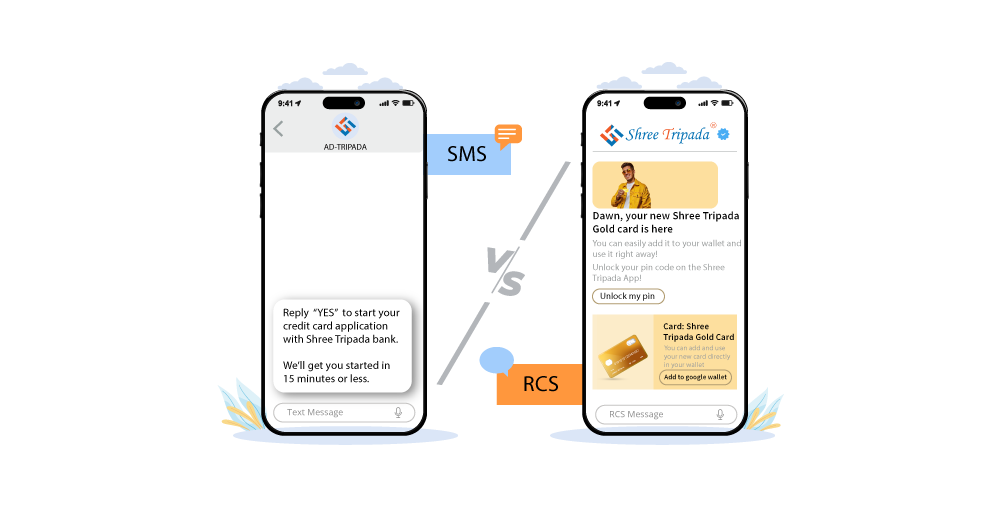In today’s fast-moving business landscape, enterprises are always seeking to connect with customers in a more meaningful way and enhance their customer experience. Businesses are often looking for innovative solutions to streamline their operations and foster a culture of strong customer relationships.

Toll-free numbers and RCS messaging services are two popular business communication channels that enterprises can use today to communicate with their customers. Read to learn more about each of these communication channels and how they are different from each other.
Toll-Free Number Service
A toll-free number service allows customers to reach out to a business without incurring any charges. Toll-free numbers have been an established communication channel for decades now.
Advantages of Toll-Free Number Service
- Strengthens Customer Trust: A toll-free number service is a sign of legitimacy, and it shows your customer that you are serious about customer engagement. It’s a great communication channel for small businesses to foster customer trust.
- Wide Accessibility: Toll-free numbers simplify communication as they provide customers across different regions with a single point of contact. This makes it a convenient and reliable communication channel for customers.
- Cost-Free for Customers: The cost-free nature of toll-free number service encourages customers to reach out to the brand for queries and concerns.
Limitations of Toll-Free Number Service
- Limited Interaction: Traditional toll-free number services don’t support rich media elements like images, videos, carousels, etc. This makes them restrictive and out of date in today’s visual world.
- Significant Operational Costs: While toll-free numbers are free for callers, the business has to pay for the cost of calls. The cost of calls can be significant depending on the number of calls and duration.
- No Real-Time Engagement: Toll-free numbers don’t provide an interactive two-way communication medium, and they can be time-consuming in comparison to quick interactive buttons for self-service available in modern communication channels like RCS, WhatsApp, etc.
RCS Messaging
RCS stands for Rich Communication Services and RBM stands for Rich Communication Services (RCS) Business Messaging. It is an interactive and new-age communication channel that offers rich media and a more immersive messaging experience.
Advantages of RCS Services:
- Rich Media: RCS services allow enterprises to send images, videos, audio files, and location information to customers directly within the messaging app.
- Interactive Elements: RCS services offer interactive elements like carousels, buttons, and suggested replies. These interactive elements streamline product browsing, appointment booking, and feedback collection.
- Help in Branding: Businesses can add their brand name and logo to their RCS messages. This makes RCS services a great communication channel to build and reinforce brand awareness.
- Real-Time Engagement: RCS services promote real-time engagement and offer greater visibility to brands into message delivery.
- Cost-Effective: For bulk messaging, RCS is more cost-effective than traditional channels.
Limitations of RCS Services
- No Direct Control over Delivery: RCS services rely on telecom providers and platforms like Google for their implementation. There is no direct business-controlled network. This translates to limited control over routing, delivery speeds, etc.
Conclusion
Both toll-free number service and RCS messaging come with their own pros and cons. The best approach would be to follow a hybrid model wherein you use both these communication channels to take your customer experience to the next level.
Vi Business helps enterprises to optimise the potential of RCS messaging through Vi Ads. Vi Ads powered by RCS offers interactive features like images, videos, carousels, maps, and app deep links that help you target the right audience based on demographic, location, affluence, interests & behaviours and device type.
Choose a trusted RCS provider to future-proof your communication strategy.














